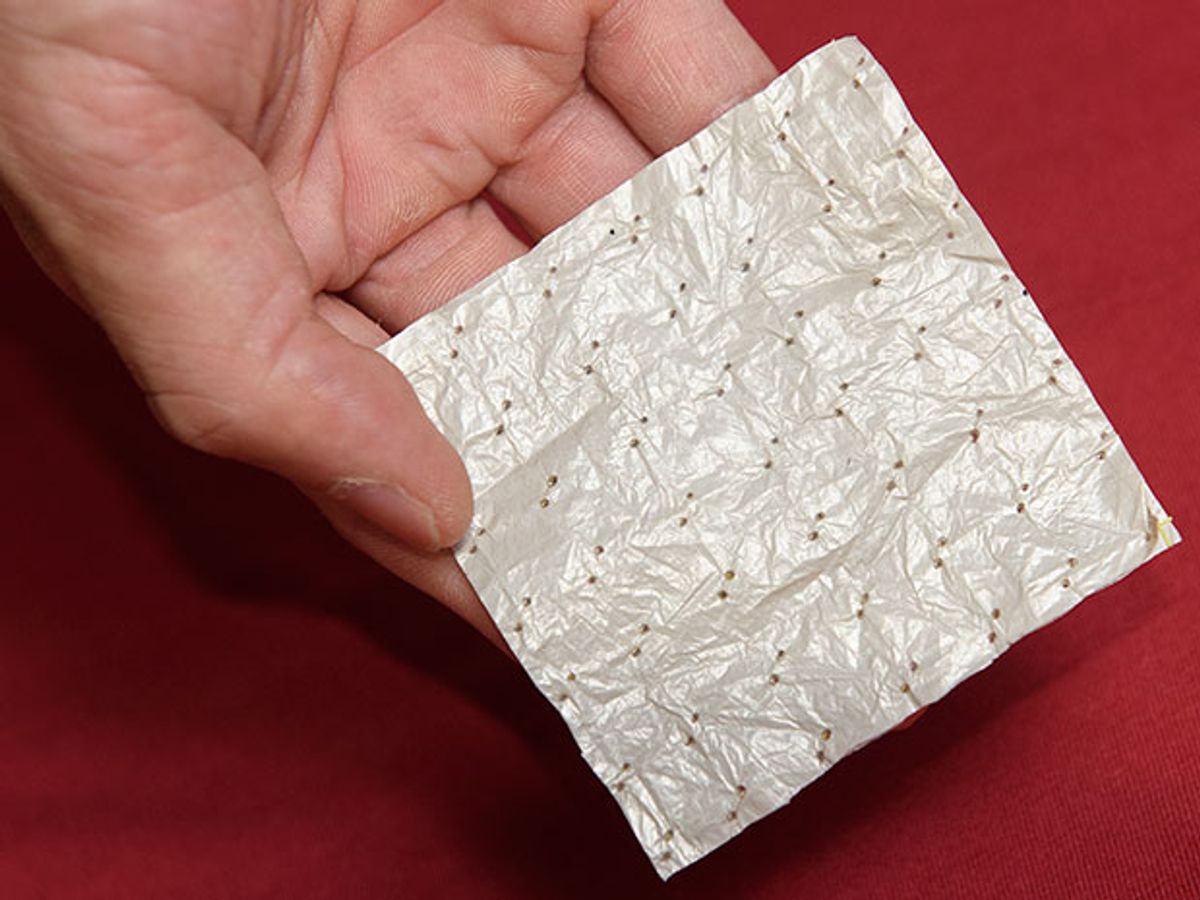The use of nanomaterials in textiles is one of the earliest commercial applications of nanotechnology. Nanomaterials have given us stain-resistant fabrics and enabled a range of wearable electronics. But they’ve yet to solve what has been the most vexing problem in clothing: keeping us cool in hot weather.
Now researchers at Stanford University have taken a nanomaterial called nanoporous polyethylene, or nanoPE (which has been mass produced for use in batteries), and tested it to see how it would tackle the challenge of creating a fabric that can keep us cool. The results reveal that it may be far more effective at keeping us cool than any other synthetic or natural fabrics.
The reason that clothing has heretofore failed to offer any relief from the heat is because our bodies give off heat in the form of mid-infrared radiation (IR), and our garments block that wavelength from escaping. While this makes clothing a clear benefit when it’s cold, in warm weather it’s a distinct disadvantage.
In research described in the journal Science, the researchers found that the interconnected pores of the nanoPE material allowed 96 percent of the infrared heat to pass through it; cotton allowed only 1.6 percent of the IR to escape.
The Stanford researchers—led by Yi Cui, who has compiled an extensive body of work in getting nanomaterials to improve the performance of batteries—claim that this ability to let IR to pass through would make the person wearing the material feel four degrees Fahrenheit cooler than if they were wearing cotton.
The nanoPE material is able to achieve this release of the IR heat because of the size of the interconnected pores. The pores can range in size from 50 to 1000 nanometers. They’re therefore comparable in size to wavelengths of visible light, which allows the material to scatter that light. However, because the pores are much smaller than the wavelength of infrared light, the nanoPE is transparent to the IR.
It is this combination of blocking visible light and allowing IR to pass through that distinguishes the nanoPE material from regular polyethylene, which allows similar amounts of IR to pass through, but can only block 20 percent of the visible light compared to nanoPE’s 99 percent opacity.
The Stanford researchers were also able to improve on the water wicking capability of the nanoPE material by using a microneedle punching technique and coating the material with a water-repelling agent. The result is that perspiration can evaporate through the material unlike with regular polyethylene.
In the video below, you can see an illustration of how the nanoPE allows both moisture and IR heat to escape through the material.
This material would seem to be a boon for us as global temperatures continue to rise. But it may also help prevent those temperatures from continuing to rise because it will make it possible to work in office buildings without as much energy being used for air conditioning.
“If you can cool the person rather than the building where they work or live, that will save energy,” said Cui in a press release.
Though the nanoPE would—by offering at least an indirect way for securing big energy savings—be one of the biggest advances in clothing since we first started wrapping ourselves in animal hides and furs, it might be good to see if anyone would want to wear the material.
The experiments with the material were conducted on a device that mimics the heat output of human skin, which sounds conspicuously non-human. Anyone that has examined the use of nanomaterials in the textile industry will tell you that the issue raised by textile manufacturers about any new material is the “hand of a fabric”—in other words, how does it feel to our touch.
In continuing research, the Stanford team will be giving the material improved textures and cloth-like characteristics. If they can overcome that hurdle, the next will be producing the material cheaply in mass production.
Dexter Johnson is a contributing editor at IEEE Spectrum, with a focus on nanotechnology.



